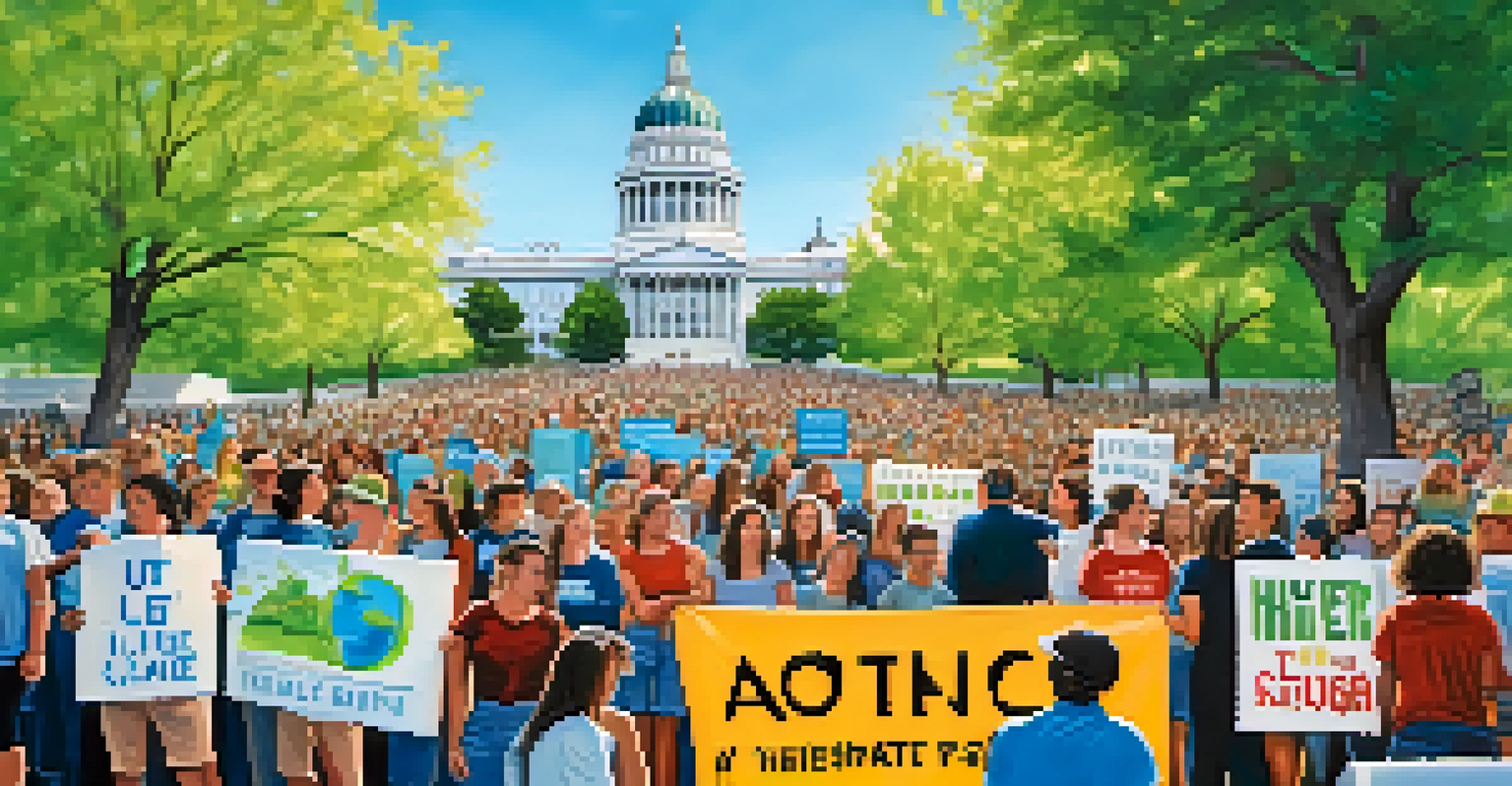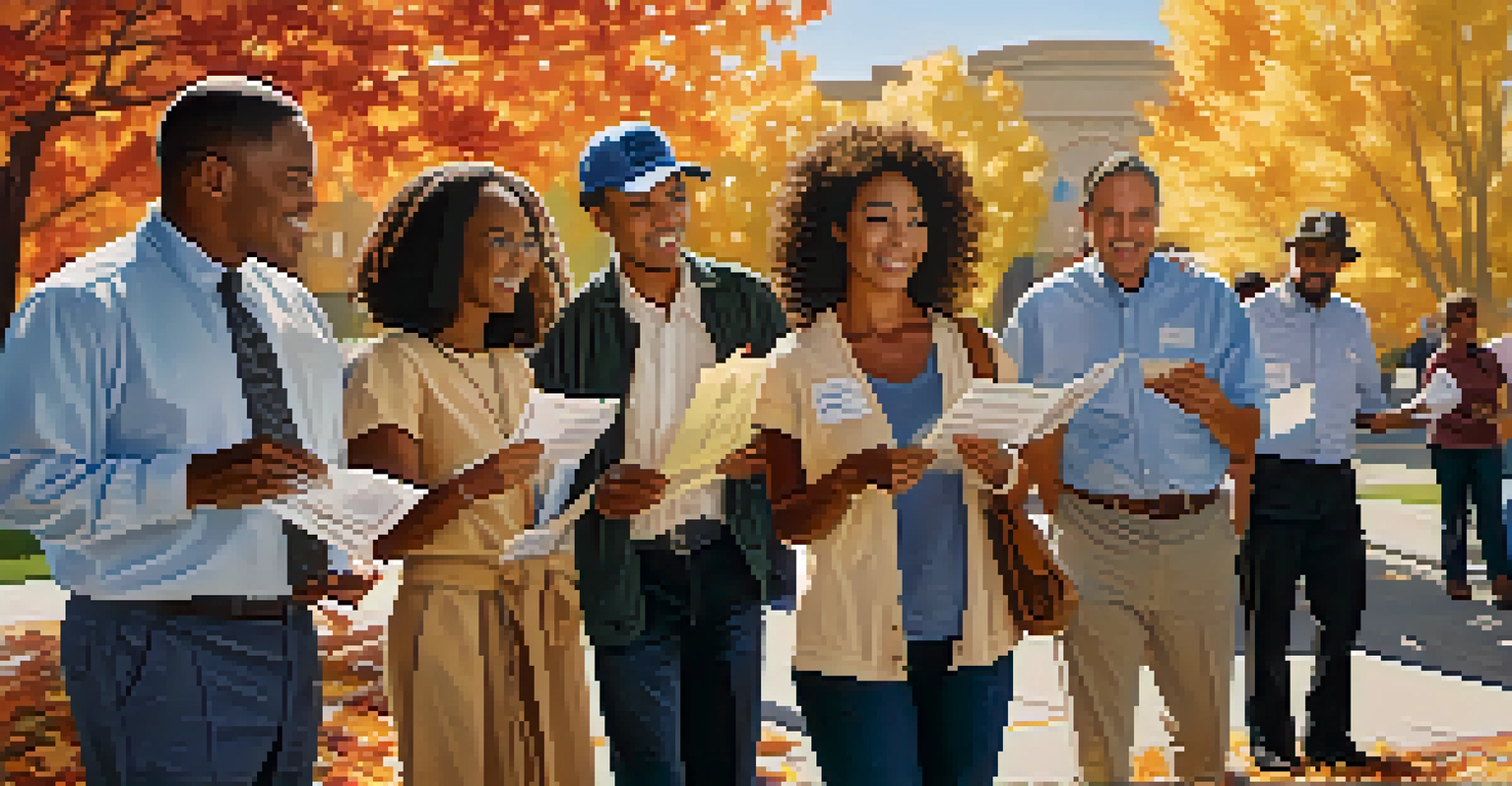The Future of Politics in Utah: Emerging Trends and Issues

Understanding Utah's Political Landscape Today
Utah's political scene has long been shaped by its unique demographics and cultural values. With a predominately conservative electorate, the state has been a stronghold for the Republican Party. However, as populations shift and younger voters emerge, the political dynamics are beginning to change, paving the way for new ideas and leadership styles.
The future belongs to those who believe in the beauty of their dreams.
In recent years, there's been a notable increase in independent voters, reflecting a desire for alternatives to the traditional two-party system. This shift indicates that many Utahns are seeking candidates who prioritize issues over party affiliation. As these trends continue, we may see a more diverse political representation in upcoming elections.
Additionally, urban areas like Salt Lake City are becoming more progressive, contrasting with rural regions that remain deeply conservative. This urban-rural divide is crucial in understanding the future political landscape, as candidates will need to appeal to a broader range of voters while addressing the unique needs of different communities.
Key Issues Shaping Utah's Political Future
Several pressing issues are taking center stage in Utah's political discussions. Among them, housing affordability has emerged as a significant concern, particularly in urban areas where demand far exceeds supply. Candidates who can effectively address this issue may gain the favor of voters who feel the pinch of rising living costs.

Another critical topic is healthcare access, especially in the wake of the COVID-19 pandemic. Many Utahns have voiced their frustrations about the healthcare system, pushing for reforms that enhance accessibility and affordability. Politicians who prioritize healthcare solutions may resonate well with constituents seeking change.
Shifting Political Dynamics in Utah
Utah's political landscape is evolving with a rise in independent voters and progressive movements in urban areas.
Finally, environmental concerns, especially water rights and air quality, are beginning to garner attention. As climate change impacts become more apparent, voters are increasingly interested in candidates who advocate for sustainable practices and policies. This shift could redefine political platforms in the coming years.
The Role of Technology in Utah Politics
Technology is revolutionizing how politics are conducted in Utah, from campaigning to voter outreach. Social media platforms have given rise to new ways for candidates to connect with voters, enabling them to share their messages more broadly and directly. This digital engagement is crucial for reaching younger, tech-savvy voters who expect transparency and accessibility.
In a democracy, the people get the government they deserve.
Moreover, the use of data analytics is becoming more prevalent in political campaigns. Candidates can now tailor their messages to specific demographics and optimize their outreach strategies based on voter behavior. This data-driven approach can enhance the effectiveness of campaigns, making them more relevant to the electorate.
However, the rise of technology also brings challenges, such as misinformation and the need for digital literacy among voters. As candidates navigate these new tools, they must be vigilant against the spread of false information and prioritize educating their constituents on how to critically assess political content.
Youth Engagement and Its Impact on Politics
The youth vote is becoming increasingly influential in Utah, as younger generations express their opinions and demand change. With issues like climate change, social justice, and education reform topping their agendas, young voters are driving conversations that challenge the status quo. Their engagement can significantly impact election outcomes, particularly in competitive districts.
Organizations focused on youth engagement are emerging, helping to mobilize this demographic and ensure their voices are heard. These groups utilize social media and grassroots campaigns to educate and encourage young voters to participate in the electoral process. This activism can lead to a more informed and engaged electorate.
Key Issues Driving Voter Engagement
Housing affordability, healthcare access, and environmental concerns are becoming central topics influencing Utah's elections.
As more young people take on leadership roles within political parties, we may see shifts in policy priorities and campaign strategies. Candidates who actively seek to understand and address the concerns of younger voters will likely find success in an evolving political landscape.
The Influence of National Politics on Utah
While Utah has its unique political identity, national politics undeniably shape local dynamics. As national issues permeate local elections, candidates often find themselves aligning with or against broader political movements. This alignment can significantly influence voter sentiment and impact the success of campaigns.
Recent polarized national debates on immigration, healthcare, and gun control have made their way into Utah's political discourse. Candidates must navigate these contentious topics carefully, balancing their positions to appease both conservative and progressive constituents. This balancing act is critical in a state where opinions can vary widely.
Furthermore, the rise of populist movements on a national scale has begun to resonate with some Utahns, prompting candidates to adopt more populist rhetoric. This trend could lead to a reshaping of the political landscape, as traditional party lines blur and new coalitions form.
The Impact of Local Issues on Elections
Local issues play a vital role in Utah's political landscape, often overshadowing national narratives during election cycles. Voters are increasingly concerned about issues that directly affect their communities, such as education funding, public transportation, and infrastructure development. Candidates who prioritize these local matters may build stronger connections with their constituents.
In recent years, initiatives aimed at improving local education systems have gained traction, as parents and educators advocate for increased funding and resources. Candidates who champion education reform can tap into a vital voter base, especially among families seeking better opportunities for their children.
Youth Influence on Future Politics
Younger voters are increasingly shaping Utah's political agenda by prioritizing issues like climate change and social justice.
Additionally, issues like public safety and economic development resonate with voters, as they seek candidates who can effectively address their concerns. Understanding and addressing these local priorities can be the key to a successful campaign in Utah's ever-evolving political landscape.
Looking Ahead: Predictions for Utah's Political Future
As we look to the future, several trends suggest that Utah's political landscape will continue to evolve. The increasing diversity of the population, both in terms of ethnicity and political ideology, is likely to lead to a broader range of candidates and perspectives in upcoming elections. This shift can enrich political discourse and encourage more inclusive policymaking.
Moreover, as younger voters become more engaged, their priorities will shape the political agenda. Issues such as climate change, social equity, and economic opportunity will likely gain prominence, challenging traditional political norms. Candidates who can adapt to these changing priorities may find themselves more successful at the polls.

Ultimately, the future of politics in Utah will depend on how well candidates can connect with their constituents and respond to emerging issues. As the political landscape continues to shift, it will be fascinating to see how these trends unfold and what they mean for the state's governance in the years to come.